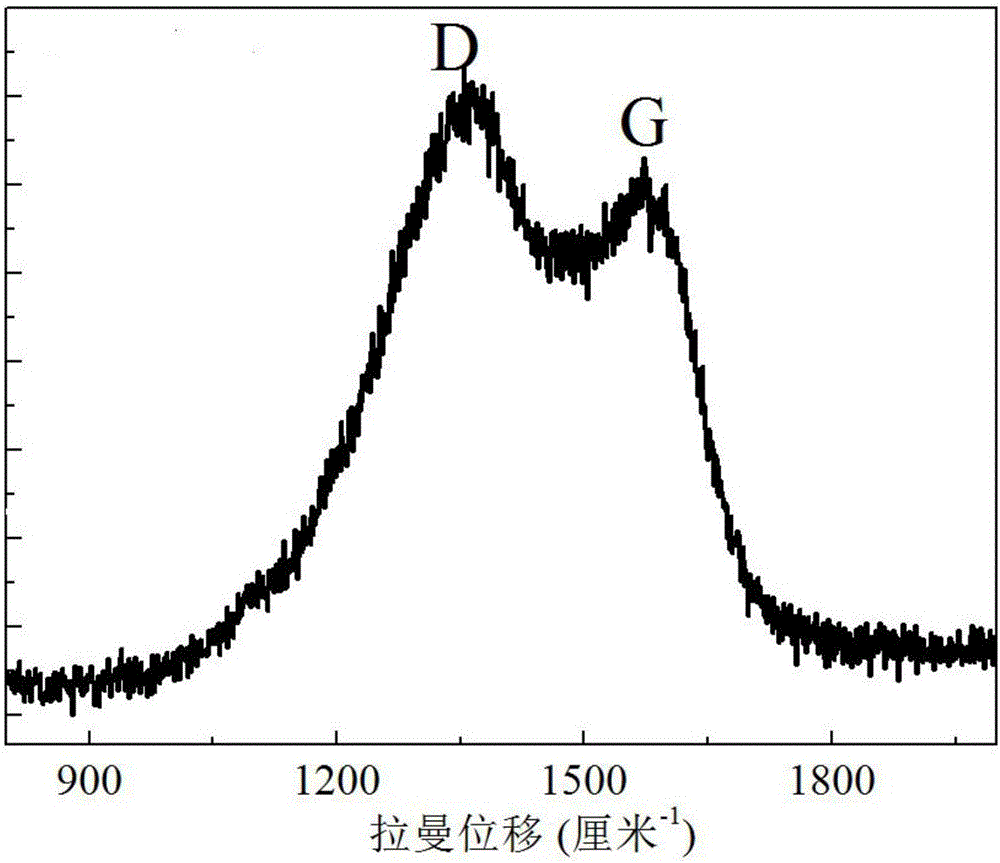Red luminescent carbon quantum dot, preparation method and application thereof
A technology of carbon quantum dots and red light emission, applied in the field of red light-emitting carbon quantum dot materials and their preparation, can solve problems such as hindering application, and achieve the effects of low cost, high yield and narrow particle size distribution
- Summary
- Abstract
- Description
- Claims
- Application Information
AI Technical Summary
Problems solved by technology
Method used
Image
Examples
example 1
[0023] Example 1: Mix 10mL dimethyl sulfoxide and 10mL dimethylformamide solution, add 1g citric acid and 3g urea, stir well and transfer to a 25mL hydrothermal kettle, then keep at 200°C for 6 hours for solvothermal reaction . The obtained nanoparticles were washed with a mixture of ethyl acetate and petroleum ether, centrifuged, and vacuum-dried at 60° C. to obtain the final product.
[0024] Transmission electron microscopy observations show that the synthesized carbon quantum dots are spherical particles with a size of about 2 to 3 nanometers ( figure 1 ). Raman spectroscopy( figure 2 ) and X-ray photoelectron spectroscopy ( image 3 , 4) show that there are a large number of pyrrole nitrogen-related defect states on the surface of carbon quantum dots. Under the excitation of 550nm yellow light, the carbon quantum dots can emit bright red light, the central wavelength of the emission band is located at 640nm, and the luminous quantum efficiency is 42%. Join Cu 2+ Af...
example 2
[0025] Example 2: Mix 10mL dimethyl sulfoxide and 10mL dimethylformamide solution, add 1g citric acid and 2g urea, stir well and transfer to a 25mL hydrothermal kettle, then keep it at 220°C for 3 hours for solvothermal reaction . The obtained nanoparticles were washed with a mixture of ethyl acetate and petroleum ether, centrifuged, and vacuum-dried at 60° C. to obtain the final product.
[0026] The transmission electron microscope observation shows that the synthesized carbon quantum dots are spherical particles of about 2-3 nanometers. Carbon quantum dots can emit bright red light with a luminous quantum efficiency of 39%. The obtained carbon quantum dots enable highly selective Cu 2+ Ion detection, the highest sensitivity can reach 45nM. By adding the strong chelating agent ethylenediaminetetraacetic acid (EDTA), the Cu 2+ Stripping from carbon quantum dots to realize the recycling of carbon quantum dots.
example 3
[0027] Example 3: Mix 10mL dimethyl sulfoxide and 10mL dimethylformamide solution, add 1g citric acid and 1g urea, stir well and transfer to a 25mL hydrothermal kettle, then keep it at 240°C for 1 hour for solvothermal reaction . The obtained nanoparticles were washed with a mixture of ethyl acetate and petroleum ether, centrifuged, and vacuum-dried at 60° C. to obtain the final product.
[0028] The transmission electron microscope observation shows that the synthesized carbon quantum dots are spherical particles of about 2-3 nanometers. Carbon quantum dots emit bright red light with a quantum efficiency of 35%. The obtained carbon quantum dots enable highly selective Cu 2+ Ion detection, its highest sensitivity can reach 47nM. By adding the strong chelating agent ethylenediaminetetraacetic acid (EDTA), the Cu 2+ Stripping from carbon quantum dots to realize the recycling of carbon quantum dots.
PUM
| Property | Measurement | Unit |
|---|---|---|
| Sensitivity | aaaaa | aaaaa |
| Sensitivity | aaaaa | aaaaa |
| Sensitivity | aaaaa | aaaaa |
Abstract
Description
Claims
Application Information
 Login to View More
Login to View More - R&D
- Intellectual Property
- Life Sciences
- Materials
- Tech Scout
- Unparalleled Data Quality
- Higher Quality Content
- 60% Fewer Hallucinations
Browse by: Latest US Patents, China's latest patents, Technical Efficacy Thesaurus, Application Domain, Technology Topic, Popular Technical Reports.
© 2025 PatSnap. All rights reserved.Legal|Privacy policy|Modern Slavery Act Transparency Statement|Sitemap|About US| Contact US: help@patsnap.com



